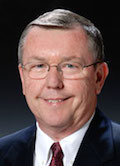4 Reasons for Optimism About Public Education
By Ronald Williamson and Barbara R. Blackburn

Ronald Williamson
As the school year ends, a collective sigh of relief can be heard across school campuses. Another year is complete. While the end of the year is filled with graduations, celebrations and excitement about the prospects of a summer break, we suggest it’s also a good time for optimism about public education and its positive impact on students and their communities.

Barbara R. Blackburn
We’d be remiss if we didn’t acknowledge the challenges educators have faced the past few years. The impact of the pandemic and political mandates added stress and tension to the complex jobs of both teachers and principals. But the end of the school year is about more than survival – it’s time to celebrate.
We remain incredibly optimistic about the future of America’s public schools. We’d like to share four reasons for our optimism and encourage a focus on those as we take a “break” from the school year.
1. Public Support Remains High
The 54th Annual PDK Poll of the public’s attitudes toward public education found that support reached a “new high’ dating back 48 years. 54% gave their local schools a grade of “A” or “B.” The poll surveys both parents of children in public schools and non-parents.
The results are significant because the past few years have been characterized by major criticism of educational policy and educators. The results remind us that too often only the voices of the sharpest critics are heard in the media.
It’s important for schools to recognize and celebrate the support they have among parents, and in the broader community. Educators will be rewarded when they focus on the relationship with their community and continue efforts to nurture and build that support.
2. New Generations Are Serving Schools
There’s a new generation of teachers entering our public schools. And it comes at a time when teacher quality matters more than ever. According to a Rand Corporation study (Opper, 2019), teachers matter more to student achievement than any other factor.
This new generation possesses skills needed for success in today’s schools. They’re creative, innovative and self-confident, and bring a new level of collaborative skills that support team-building. What’s more, they’re very comfortable with technology (Williamson & Blackburn, 2020).
They are also among the most diverse population of newer tesachers in history (Gumber & Beckhusen, 2022). While they still lag the diversity of students, the Census Bureau found that about one quarter of all teachers were non-White, up from previous decades.
These new generations’ zest for learning and their commitment to positive social change, as well as their commitment to accountability, will change public schools for generations.
3. Technology’s Positive Impact
Technology is embedded in every aspect of our lives, and schools are no different. Just as there’s a new generation of teachers, new technology and new applications for old technology are positively impacting instruction.
Appropriate use of technology benefits student learning. Student engagement is boosted. Personalized learning is possible, and students can work collaboratively to develop critical skills. (Forbes Technology Council, 2021)
Perhaps the most important benefit is that technology creates new opportunities for students to put their knowledge and skills to work, applying what they know to solve problems, create solutions, and see the connection between their school work and real-life applications.
MiddleWeb (www.middleweb.com) is a wonderful resource for learning about the use of technology to improve instruction. There are countless examples of the application of technology and its benefits among its many posts (including the Class Apps blog).
4. Perseverance and Courage
While we are optimistic about changes in the workforce and in the use of technology, we don’t want to discount the incredible contributions that teachers and principals make every day for their students and community.
Teachers, and principals, are courageous people who understand that the decisions they make throughout the days, weeks and months of the school year matter a great deal for their students. Their willingness to advocate for students,to speak up for sound educational policy, and to seek the resources needed to support student success despite the challenges is laudable. They are true models of professionals committed to improving our nation and its communities through the power of public education.
Nothing matters more than a good teacher, and America’s public schools are blessed with teachers, and principals, who excel at putting students first, confronting persistent educational challenges and finding creative solutions to instructional and non-instructional problems.
Final Thoughts
Despite the challenges, America’s public schools are thriving. When we look beyond the headlines at the real data, we believe there’s reason for incredible optimism. The public supports their local schools. Teachers entering the workforce complement veteran teachers and share a commitment to the success of each student..
As most schools take a “break,” we encourage teachers and principals to focus on the positives and the successes they’ve achieved, and to recognize the reasons to remain optimistic about the future of America’s public schools.
References
► Forbes Technology Council (2021). 12 Ways Technology Can Yield Better Educational Outcomes. Retrieved from https://www.forbes.com/sites/forbestechcouncil/2021/01/26/12-ways-technology-can-yield-better-educational-outcomes/?sh=2313de15157a
► Gumber, C. & Beckhusen, J. (2022). Review of Two Texas Counties Shows Gap in Teacher/Student Diversity. Retrieved from https://www.census.gov/library/stories/2022/01/nations-teachers-more-diverse-but-still-lag-racial-ethnic-makeup-of-students.html
► Opper, Isaac M. Teachers Matter: Understanding Teachers’ Impact on Student Achievement. Santa Monica, CA: RAND Corporation, 2019. https://www.rand.org/pubs/research_reports/RR4312.html .
► Phi Delta Kappan (2022). PDK Poll of the Public’s Attitudes Toward the Public Schools. Retrieved from https://pdkpoll.org/2022-pdk-poll-results/
► Williamson, R. & Blackburn, B. (2020). Tips for Working with Millennial Teachers. Retrieved from https://www.middleweb.com/34940/tips-for-working-with-millennial-teachers/

Dr. Barbara R. Blackburn, a “Top 10 Global Guru in Education,” is a bestselling author of over 30 books and a sought-after consultant. She was an award-winning professor at Winthrop University and has taught students of all ages. In addition to speaking at conferences worldwide, she regularly presents virtual and on-site workshops for teachers and administrators. Barbara is the author of Rigor in Your Classroom: A Toolkit for Teachers, Second Edition (Routledge/EOE, 2023).
Ronald and Barbara’s upcoming book is Improving Teacher Morale and Motivation: Leadership Strategies that Build Student Success, set for September 2023 publication by Routledge/Eye on Education.
Educator avatars image by Coffee Bean from Pixabay

































